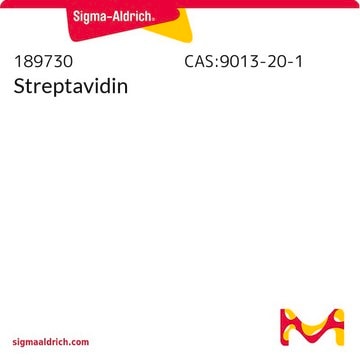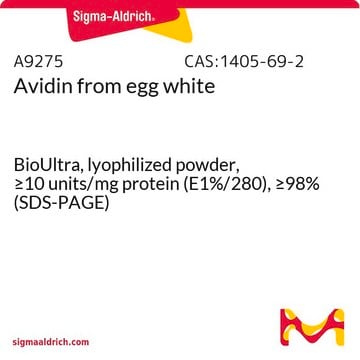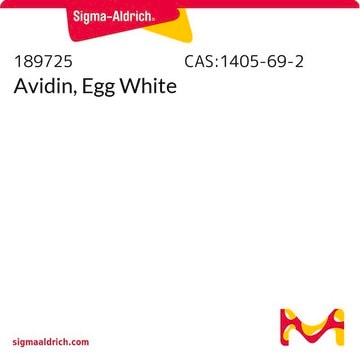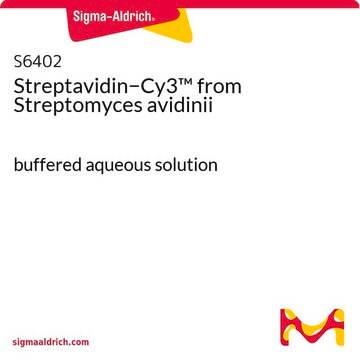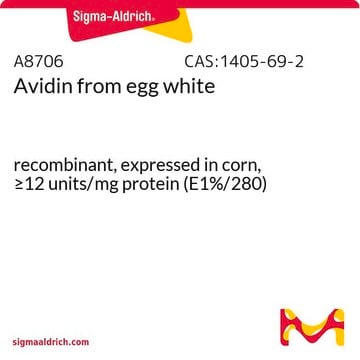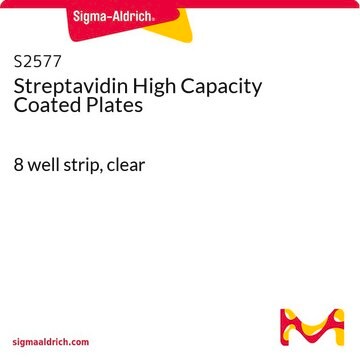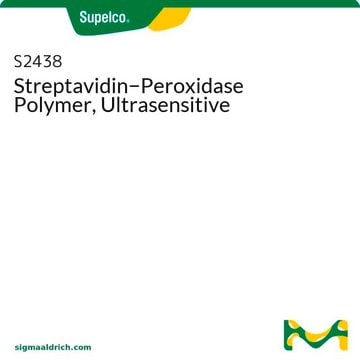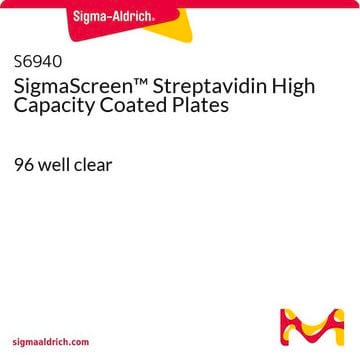Following reconstitution, aliquot and freeze (-20°C) for long term storage or refrigerate (4°C) for short-term storage. Aqueous stock solutions are stable for 6 months at 4°C and for up to 2 years at -20°C.
SA101
Streptavidin
5 mg Streptavidin for ELISA & Western Blotting.
Synonim(y):
Białko streptawidyny, Białko wiążące biotynę
Wybierz wielkość
2200,00 zł
Przewidywany termin wysyłki05 maja 2025Szczegóły
Wybierz wielkość
About This Item
2200,00 zł
Przewidywany termin wysyłki05 maja 2025Szczegóły
Polecane produkty
białko sprzężone
unconjugated
Poziom jakości
producent / nazwa handlowa
Chemicon®
metody
ELISA: suitable
western blot: suitable
Warunki transportu
wet ice
Opis ogólny
Zastosowanie
Działania biochem./fizjol.
Informacje prawne
Oświadczenie o zrzeczeniu się odpowiedzialności
Kod klasy składowania
11 - Combustible Solids
Klasa zagrożenia wodnego (WGK)
WGK 3
Temperatura zapłonu (°F)
Not applicable
Temperatura zapłonu (°C)
Not applicable
Certyfikaty analizy (CoA)
Poszukaj Certyfikaty analizy (CoA), wpisując numer partii/serii produktów. Numery serii i partii można znaleźć na etykiecie produktu po słowach „seria” lub „partia”.
Masz już ten produkt?
Dokumenty związane z niedawno zakupionymi produktami zostały zamieszczone w Bibliotece dokumentów.
Klienci oglądali również te produkty
-
How should I store SA101, Streptavidin after reconstitution?
1 answer-
Helpful?
-
Active Filters
Nasz zespół naukowców ma doświadczenie we wszystkich obszarach badań, w tym w naukach przyrodniczych, materiałoznawstwie, syntezie chemicznej, chromatografii, analityce i wielu innych dziedzinach.
Skontaktuj się z zespołem ds. pomocy technicznej